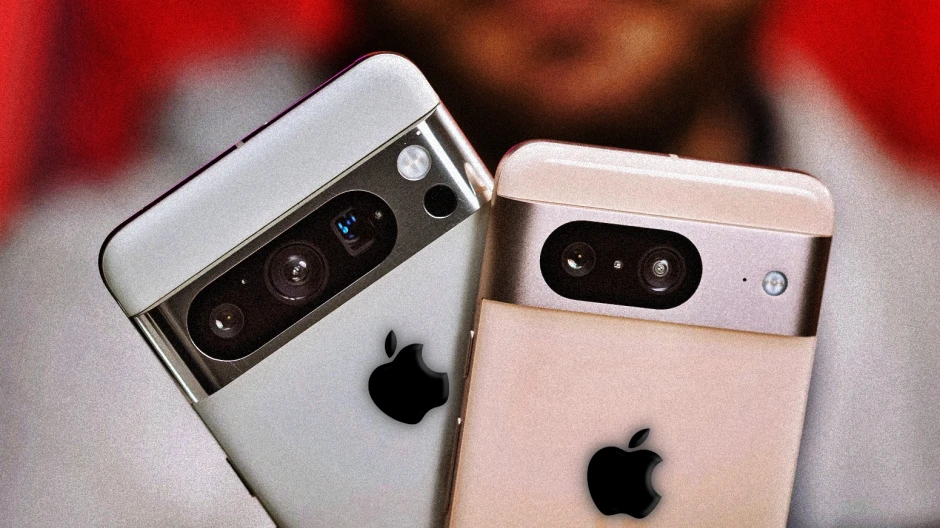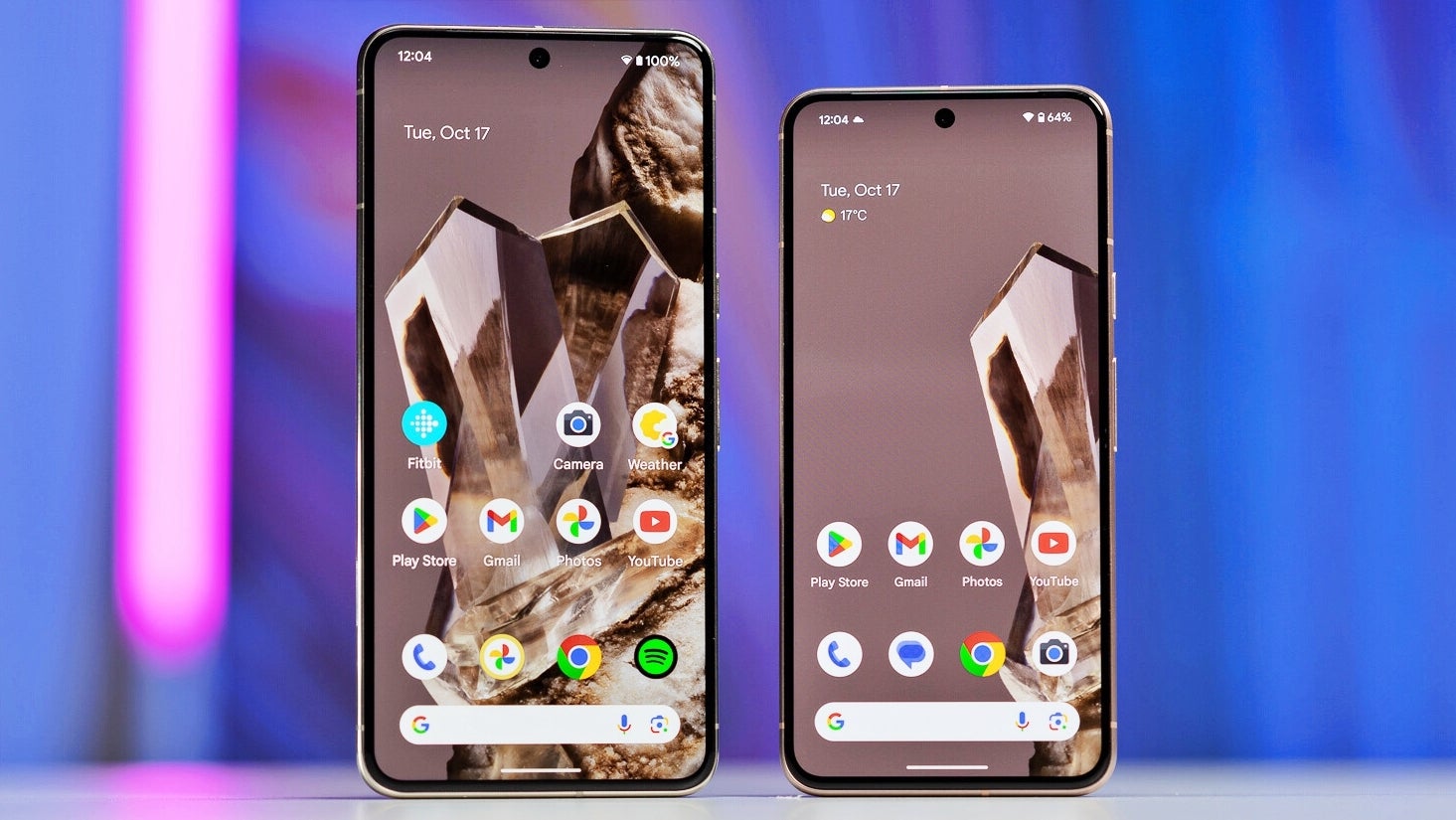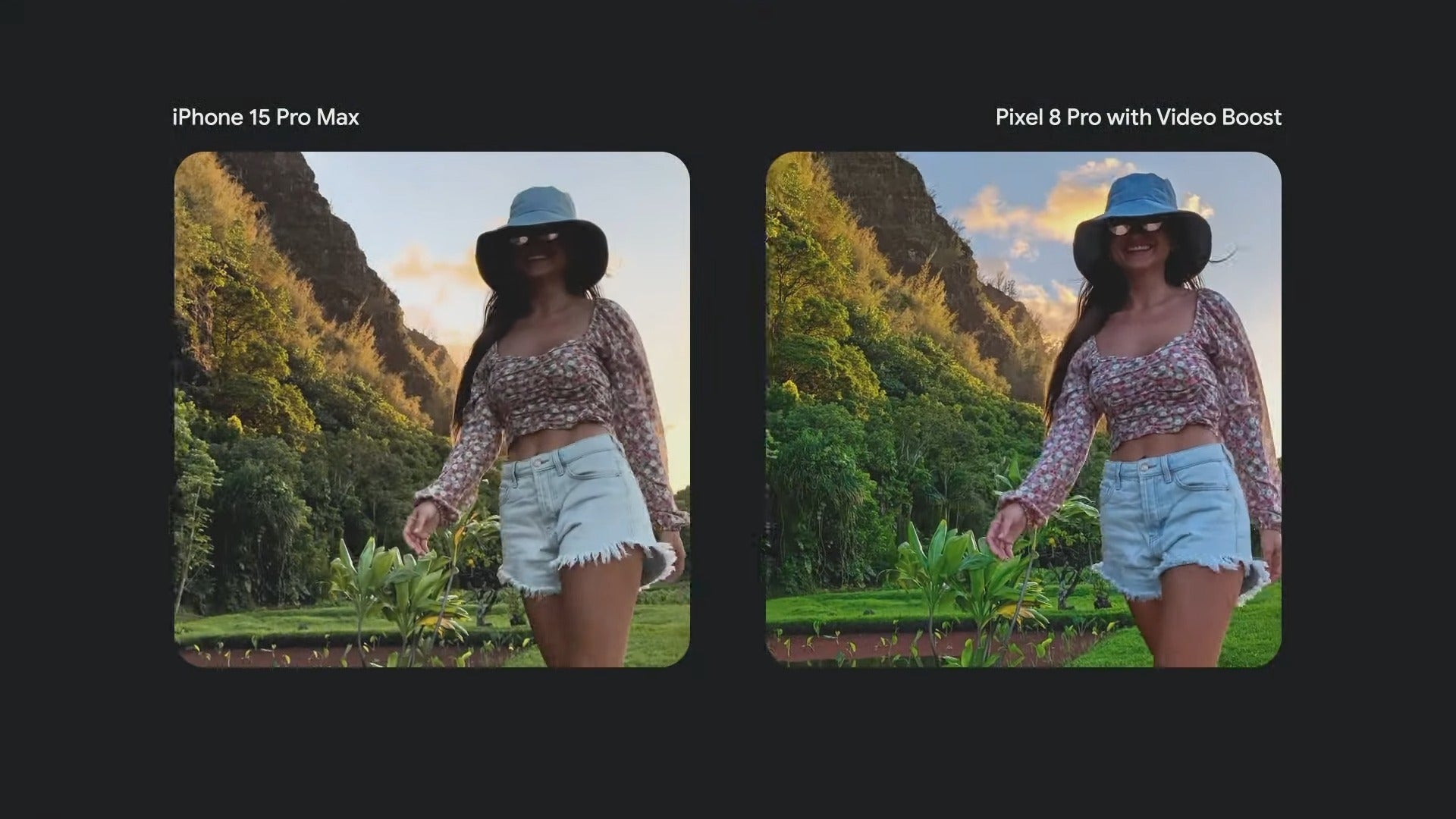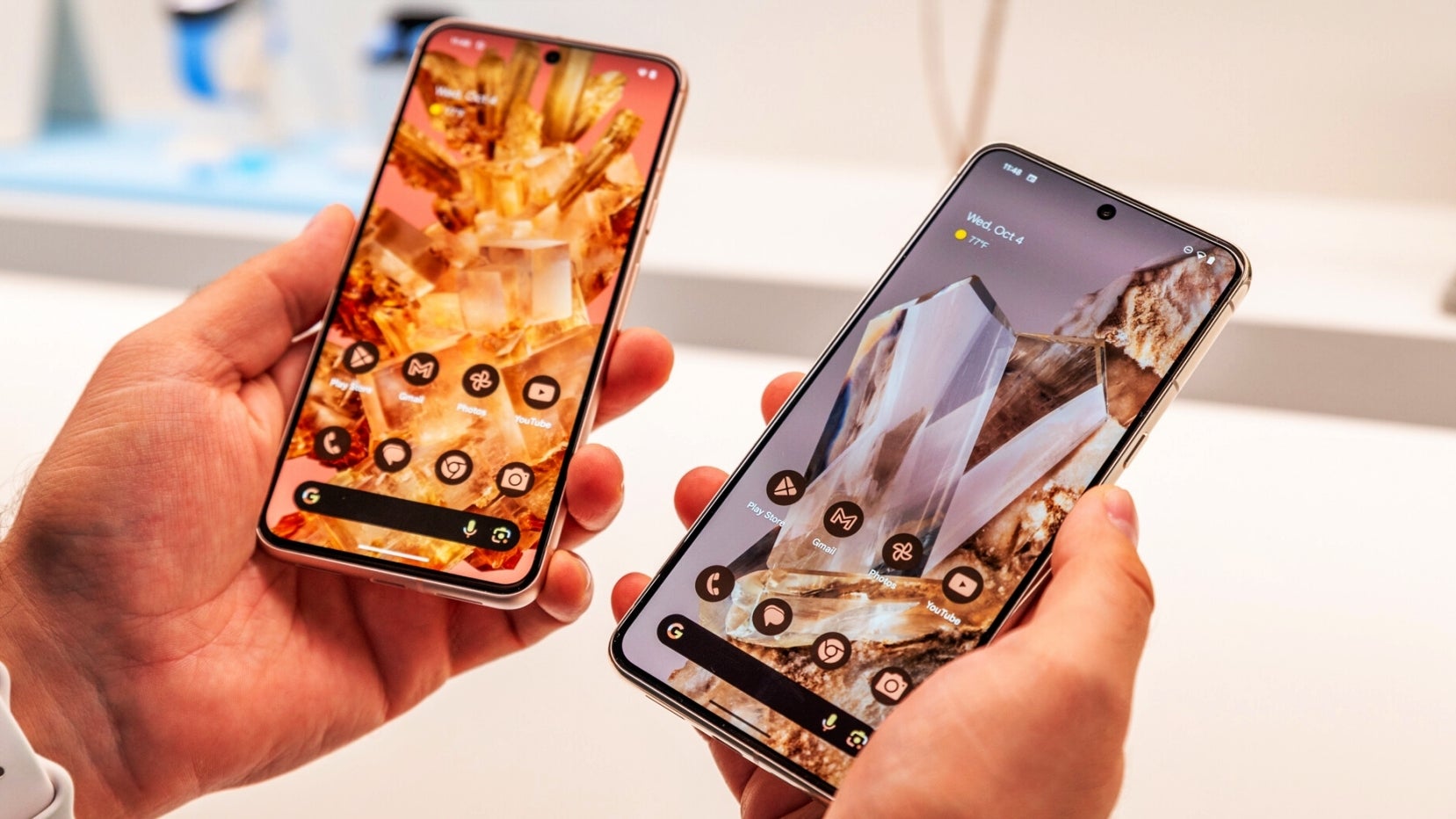FYI: Google is doing the cheaper Pixel 8 dirty with absurd tricks even Apple would be jealous of

Younger smartphone users might not know this, but picking a new phone to buy used to be much easier and simpler back in “the day”. That’s because there were times when Apple, Samsung and Google only made one flagship phone a year (and later on, maybe two).
I must admit… As someone who tends to struggle with making choices – whether it’s picking a new phone, or a toothbrush, I’m sort of fond of those “simple times”, when the iPhone 5 was the iPhone; the Galaxy SII was the Galaxy flagship, and the Nexus 4 was the only Nexus, etc.
That being said, I also recognize how amazing it is to have a larger selection of phones to pick from – even when talking about the same lineup of flagships. Not to mention I’ve been using an iPhone 13 mini for the past year now – a phone that wouldn’t even exist if Apple didn’t decide to make a flagship iPhone for those yearning for the days of the iPhone 4 – something the company didn’t really need to do.
And via the worst segue in recorded history, I can now talk about something Google didn’t necessarily have to do (but did anyway), which is to change its product strategy.
Those with a keener (read: nerdy) eye might already know that the brand new Pixel 8 and Pixel 8 Pro are… very different phones. What you might not know is Google’s sneaky way of making them even more different than you realize. So, let’s talk about it?
Pixel 8 isn’t getting a bunch of “magical” features reserved for the more expensive Pixel 8 Pro model, and the only reason might be Google’s new business strategy

Google is pulling an Apple on us.
- Ever since the birth (or rather rebirth) of the fully autonomous Pixel lineup, which started with the Pixel 6 and Pixel 6 Pro and the first Google-designed Tenor SoC, virtually every tech person I’ve come across has been critical of Google’s decision to set a $300 price gap between the vanilla and Pro model.
- The reason Google’s move stands out like a sore thumb is (of course) the natural comparisons with Apple and Samsung’s flagship lineups. Simply put, Google lacks the “buffer flagship” Samsung and Apple have (think: Galaxy S23+ and iPhone 14 Plus), which makes the $300 price gap between the (only) two Pixel flagships seem extremely large and extremely hard to justify.
- For example, up until the launch of the Pixel 8 series most “smartphone specialists” advised most people to ”just buy the vanilla Pixel 6 or Pixel 7 instead of the Pro models”, and I don’t blame them – the value proposition was always in favor of Google’s $600 base model flagships.
- But this time Google is shaking things up a little bit, in a strategic shift that (in my opinion) was always just a matter of time. But exactly how different are the Pixel 8 and Pixel 8 Pro? Well, the answer might surprise you…
The Pixel 8 Pro’s “professional camera mode”, 50MP photos, Zoom Enhance, Video Boost, Night Sight video, and improved Magic Eraser not available on the cheaper Pixel 8

The Pixel 8 Pro’s Video Boost is just one of the new features Google’s decided to lock out of the Pixel 8.
- The brand new Pro mode in the camera of the Pixel 8 Pro, which allows you to set exposure, ISO, focus, etc. is nowhere to be found in the vanilla Pixel 8; the most ironic thing here might be that techies have already found ways to port the “exclusive” Pro mode not only on to the Pixel 8 but also on to the Pixel 6 and Pixel 7
- 50MP mode – another camera feature we’ve been asking Google to add to the Pixel camera for years is a high-res mode that takes advantage of the 50MP camera the company has been using for three years now; well, the 50MP mode is here now (and it works amazingly well, pulling more detail than both Samsung and Apple’s 50/48MP cameras) but… it’s reserved for the Pixel 8 Pro, which is totally absurd – there’s no other way to put it
- Zoom Enhance (coming soon) is another software feature from Google’s AI bag, which lets you zoom in on any photo after the fact and crop to what you want the focus of your photo to be. Using generative AI, Zoom Enhance can make a clear(er) picture out of pixelated… pixels, and considering the vanilla Pixel 8 lacks a zoom camera, this feature seems perfect for the $700 phone, which makes Google’s decision to make it exclusive to the Pixel 8 Pro even more bizarre
- Google’s seemingly magical Video Boost that’s supposed to make videos taken with the Pixel 8 Pro like a million times better than those take with an iPhone (judging by Google’s demonstration on stage) is also not coming to the Pixel 8 – bear in mind this feature isn’t going to be out until the end of the year, which gives Google time to change its mind… please?
- Another not-out-yet camera feature coming only to the Pixel 8 Pro is Night Sight video, which sounds like exactly what it’s supposed to be – make videos taken in low-light brighter and cleaner
- According to Google’s website, the “improved” version of the Magic Eraser (one of the Pixel 6 and Pixel 7’s most talked about features), which can help you remove even larger distractions – including shadows and objects attached to those distractions is also exclusive to the Pixel 8 Pro
While some of the omitted features on the Pixel 8 won’t be a “big deal” to many – like the Pro mode in the camera app (most people just point and shoot), the absence of the Video Boost, Night Sight video, and the improved Magic Eraser (which Google is so proud of) make me scratch my head. And, of course, the omission of the 50MP mode in the camera of the Pixel 8 is just absurd – even Apple didn’t go that far with the iPhone 15 series.
Is there a technical reason Pixel 8 can’t get the same magical camera features the Pixel 8 Pro is getting?
In a nutshell, the answer to this question is… I really don’t think so.
What stands out here is that all the new software-related boundaries Google decided to set between the Pixel 8 and Pixel 8 Pro are all camera-related. For one, this shows how big of a focus the camera is on the Pixel 8 Pro (and in the industry in general), but more importantly, the software nature of all of these features shows that there’s really no reason they couldn’t work on the $700 Pixel 8 but only on the Pixel 8 Pro.
The two phones share the same Tensor G3 chip and even the very same 50MP primary camera sensor, with the only hardware difference (that could potentially mean something) is the 8 vs 12GB of RAM.
But then again, if RAM was ever a limitation, why wouldn’t Google just increase it to give the vanilla Pixel 8 flagship the awesome camera features the company is working so hard to make and sell? Not to mention, adding an extra 4GB of RAM should cost peanuts to Google.
Pixel 8 vs Pixel 8 Pro – is the massive $300 price gap justified now, or does it make even less sense?

Google’s upselling technique is different than Samsung’s, and sort of reminiscent of Apple’s.
In the end, I’m certainly not trying to “expose” Google – especially considering we’re talking about strategic business decisions here. But my job is to break down what’s happening in the smartphone world, and let you decide how you feel about it.
I suppose the main question around the “Pixel 8 vs Pixel 8 Pro” comparison is… Did Google go a bit too far, trying to differentiate the two Pixel flagships?
In my view, software-locking features, let alone ones that you’re trying to push so hard, so proudly, might be my least favorite way of handling upselling in the world of phones. And I even think Google will listen to the tech world, and track back on some (but maybe not all) of its decisions.
Is software-locking some of the most interesting AI/camera features out of the Pixel 8 the right way to go about justifying the huge $300 price gap between the Pixel 8 and Pixel 8 Pro?
How Apple, Samsung, and Google go about upselling smartphones
But is there a right way to make a flagship lineup in the first place? What’s the right balance of must-have and premium features? Can you make everyone happy? Probably not.
- Apple, for example, might be the least generous phone-maker in that regard as the iPhone 15 and iPhone 15 Pro might look almost the same but differ in almost every hardware element – from materials to the SoC powering the phones – but perhaps that’s why it’s the best at upselling; Apple is also the master of making an $800 flagship that looks and feels like a $1,200 flagship
- Samsung sits on the opposite end of the spectrum, as one of the more generous phone-makers when it comes to giving affordable flagships premium features; for instance, the Galaxy S23 and S23+ give you pretty identical hardware (and exactly the same software tricks) as the Galaxy S23 Ultra – save for the S-pen and 10x zoom camera, which are pretty niche features that majority of the people won’t care about
Clearly, Google’s goal in the smartphone business is to become big enough to start playing in the same league as Samsung and Apple, and this involves playing by the same (or similar) rules. So, make no mistake – the more phones Google sells, the more strategic the company’s product lineup is going to get. We’ve seen this before with OnePlus and even Samsung.